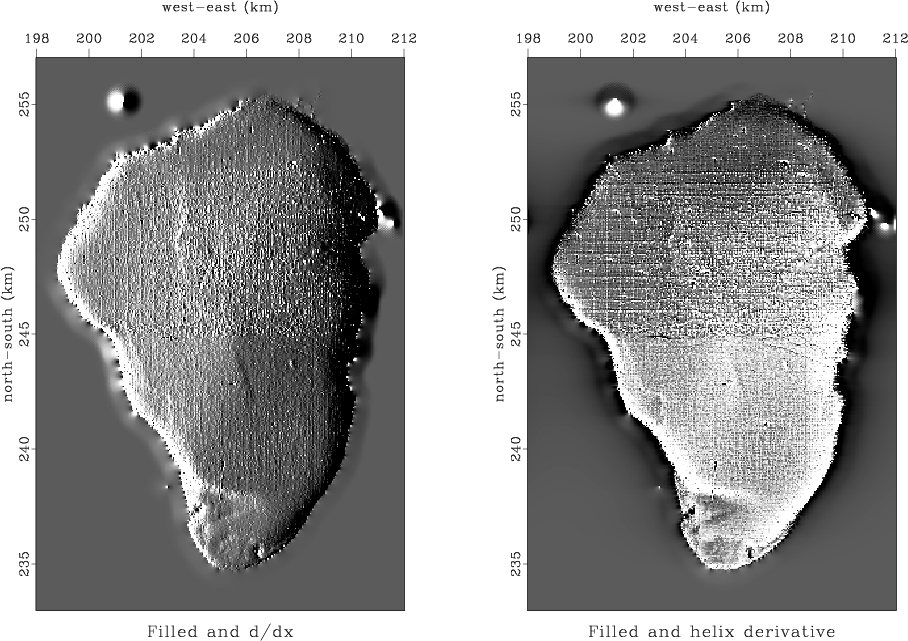|
|
|
|
The helical coordinate |
It is nice having the 2-D helix derivative,
but we can imagine even nicer 2-D low-cut filters.
In 1-D, we designed a filter with an adjustable parameter,
a cutoff frequency.
In 1-D, we compounded
a first derivative (which destroys low frequencies)
with a leaky integration (which undoes the derivative at all other frequencies).
The analogous filter in 2-D would be
![]() ,
which would first be expressed as a finite difference
,
which would first be expressed as a finite difference
![]() and then factored as we did the helix derivative.
and then factored as we did the helix derivative.

|
|---|
|
helgal
Figure 12. Galilee roughened by gradient and by helical derivative. |
|
|
We can visualize a plot of the magnitude of the 2-D
Fourier transform of the filter equation (13).
It is a 2-D function of ![]() and
and ![]() and it should
resemble
and it should
resemble
![]() .
The point of the cone
.
The point of the cone
![]() becomes
rounded by the filter truncation, so
becomes
rounded by the filter truncation, so
![]() does not reach zero at the origin of the
does not reach zero at the origin of the ![]() -plane.
We can force it to vanish at zero frequency
by subtracting .183 from the lead coefficient 1.791.
I did not do that subtraction in Figure
12,
which explains the whiteness in the middle of the lake.
I gave up on playing with both
-plane.
We can force it to vanish at zero frequency
by subtracting .183 from the lead coefficient 1.791.
I did not do that subtraction in Figure
12,
which explains the whiteness in the middle of the lake.
I gave up on playing with both ![]() and filter length;
and now, merely play with the sum of the filter coefficients.
and filter length;
and now, merely play with the sum of the filter coefficients.
|
|
|
|
The helical coordinate |